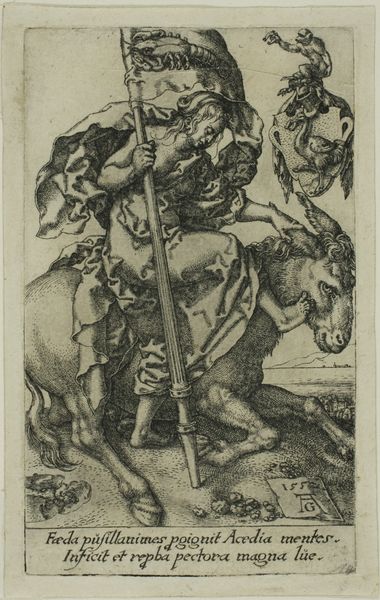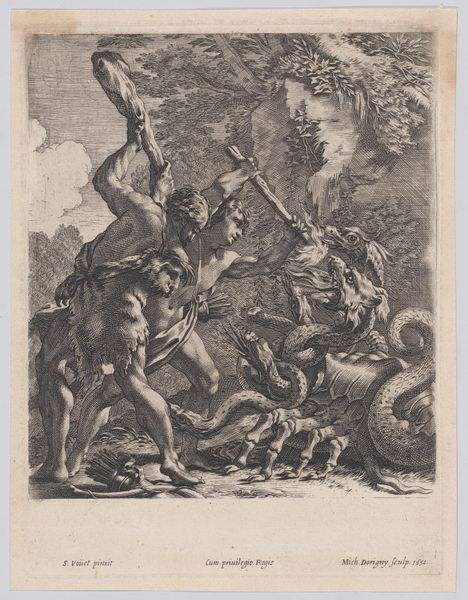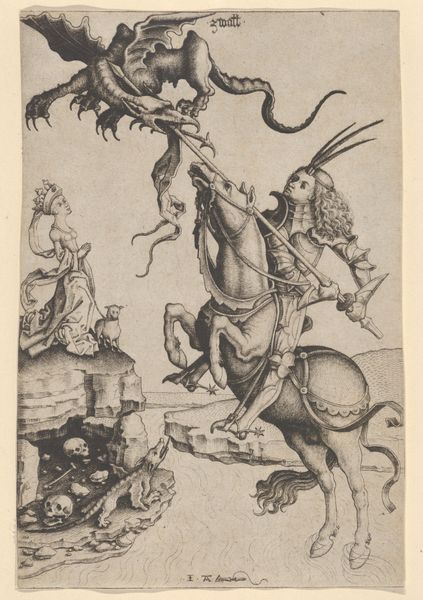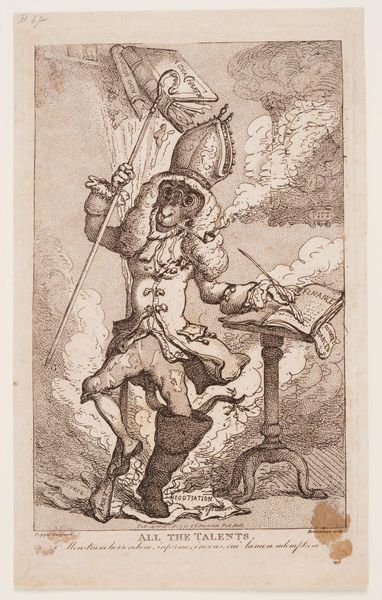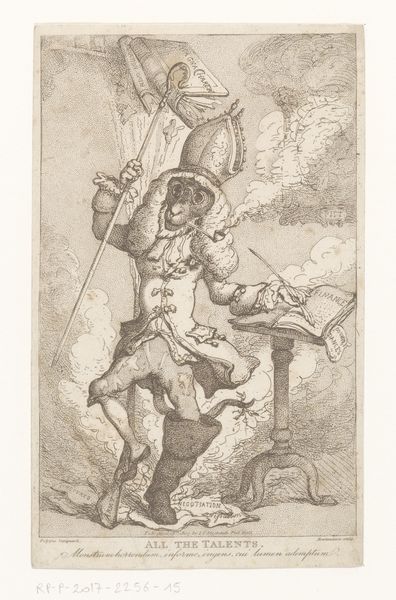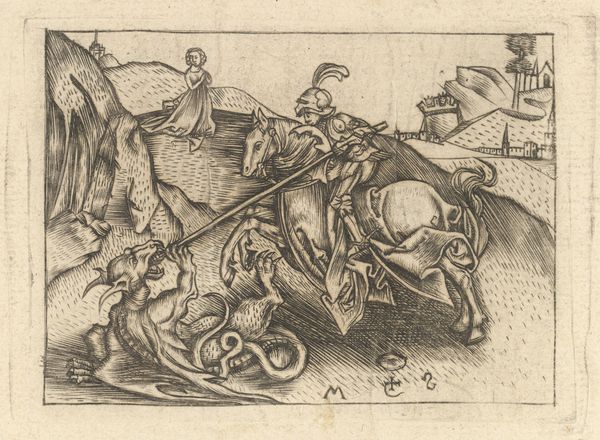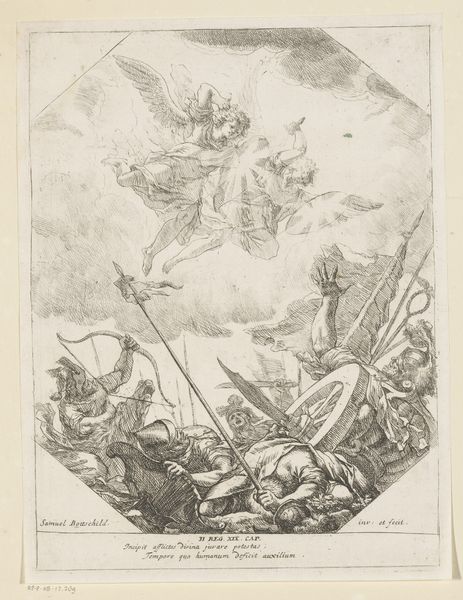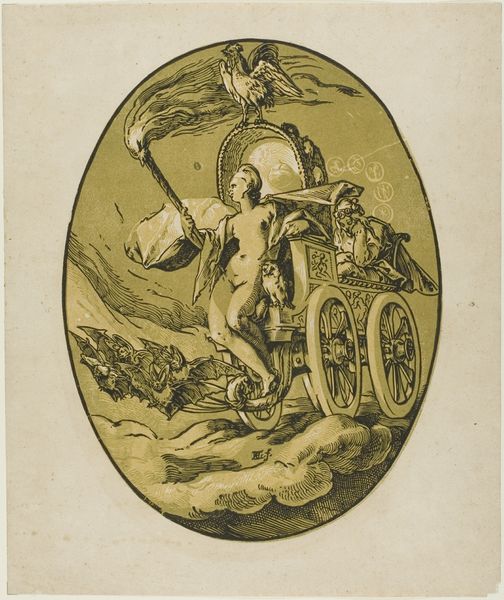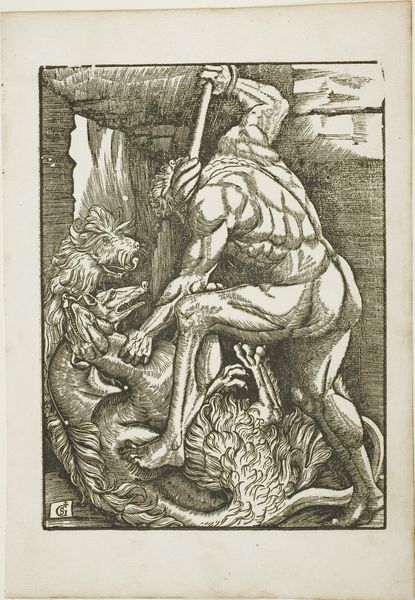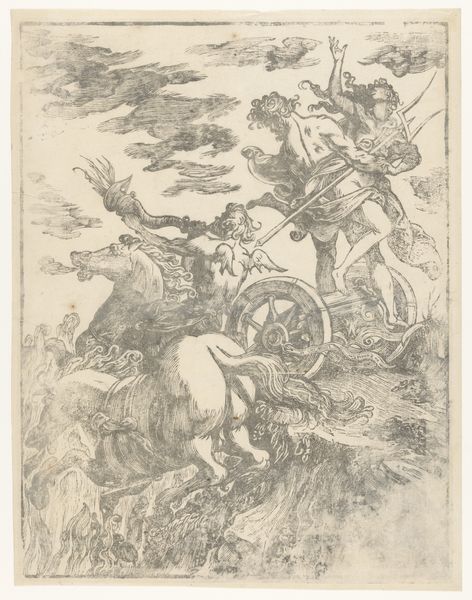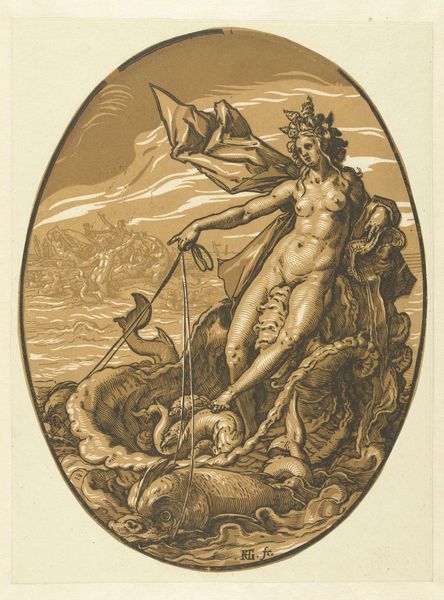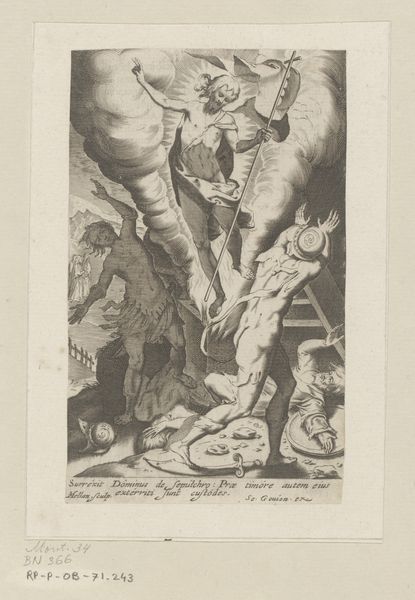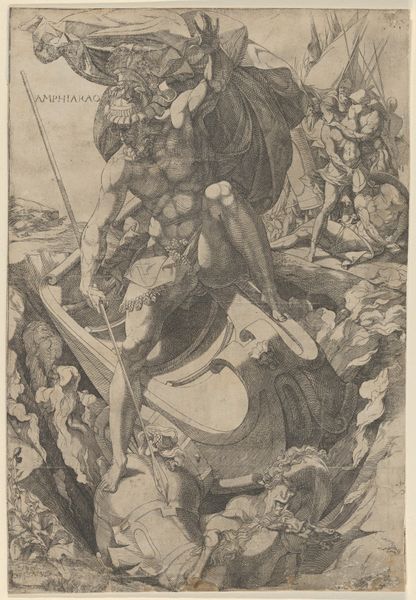
engraving
#
caricature
#
mannerism
#
figuration
#
mythology
#
line
#
history-painting
#
engraving
Dimensions: height 348 mm, width 265 mm
Copyright: Rijks Museum: Open Domain
Curator: The swirling lines and forceful depiction immediately strike the eye. What do you make of this composition, this print entitled "Oceanus" by Hendrick Goltzius, created between 1589 and 1590? It's currently held here at the Rijksmuseum. Editor: My first impression? A dramatic display of power. The composition, constrained within the oval frame, amplifies the imposing figure of Oceanus, made up of so many meticulously laid engraved lines. Curator: Indeed. Let’s consider the process of engraving. Goltzius, a master printmaker, uses the burin to carve these lines into the copper plate. Think about the physical labor involved and the means of production. Each line is a result of careful material engagement with the tools. What this does, from my point of view, is create layers and movement by capturing this scene depicting history and mythology, both themes highly visible at that time in art, which is something you don't see every day. Editor: Agreed. Note how the lines delineate form and texture, guiding the viewer’s eye. There's a sophisticated interplay between light and shadow, achieved solely through these engraved marks. This engraving relies on a Mannerist vocabulary: look at the stylized anatomy of the sea god and the almost theatrical composition. Curator: Now, think of this print in relation to the broader social context. Who would have purchased this? How would it have been circulated? This connects directly to patterns of patronage and art consumption at the time. Editor: Certainly. The print would have been relatively affordable compared to paintings, making it accessible to a wider audience and I imagine its market appeal. We could unpack the mythological elements further. What symbolic weight would viewers have placed on the figure of Oceanus himself? What's the role of his accessories to transmit different signals that a regular man wouldn't get? Curator: Exactly. Goltzius made a caricature of himself in these pieces, or other works. Think of the social position that Goltzius himself held to create these masterpieces! We see how this ties back to the means of production and the systems in place that allow an artist of such standing to even create. Editor: It’s an engaging piece. I particularly admire how it exemplifies the creative and structural potential inherent within this limited medium to depict the mythological stories. Curator: And, from my side, it exemplifies how those like Goltzius took advantage of the material and opportunities available in the context of that time period.
Comments
No comments
Be the first to comment and join the conversation on the ultimate creative platform.
